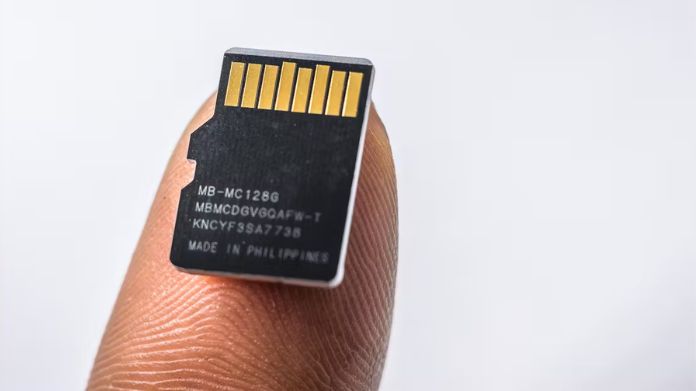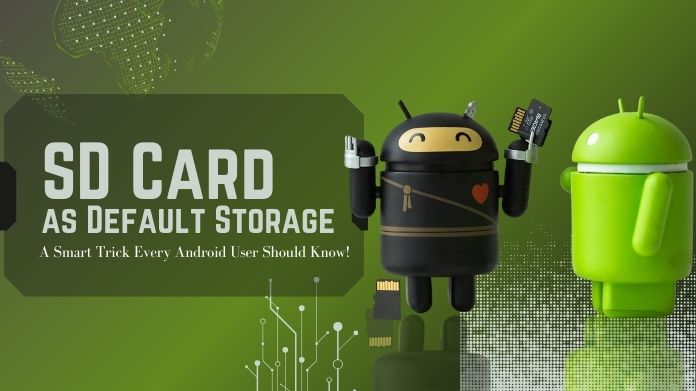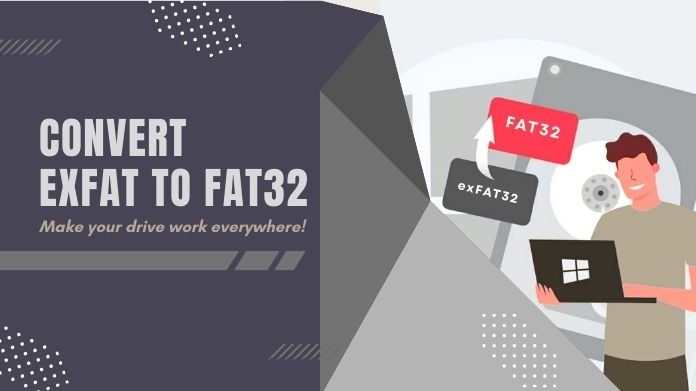How long ago did 16GB of storage seem absolutely massive? Those days are long gone. Smartphones film in 4K, handheld consoles carry huge games, and creators film 8K footage.
Our digital lives are getting heavier by the second. And despite cloud storage, now and then you still need access to fast, reliable, and portable memory.
Hence, the emergence of the microSD Express card is a giant leap in the way we view expandable storage.
Not just a faster version of memory cards we know; it’s a whole new deal. So, allow us to break it down for you.
What is a MicroSD Express Card, Anyway?
The microSD Express card can be thought of as a beefier version of the microSD card. It is still a microSD card, so it retains the small, familiar size we are all used to.
It has been completely reengineered internally with state-of-the-art interfaces such as PCIe Gen 3 and NVMe 1.3 – the same technology behind high-speed SSDs in your laptop and desktop.
Top Features at a Glance:
- Speeds up to 985 MB/s (that’s nearly 10x faster than standard cards)
- Uses PCIe/NVMe protocols for lightning-fast performance
- Backwards compatible with older microSD devices (though you won’t get those crazy speeds), but you may need to format SD card before use.
So, whether you’re gaming on the go or transferring large media files, this little card delivers serious horsepower.
How Does It Compare to Traditional microSD Cards?
Let’s talk numbers. Here’s a quick speed comparison:
|
Card Type |
Max Speed |
| UHS-I | 104 MB/s |
| UHS-II | 312 MB/s |
| UHS-III | 624 MB/s (rarely used) |
| microSD Express | 985 MB/s |
That’s not just a slight bump; it is a sizeable leap. And it isn’t solely about speed. Traditional cards use parallel data paths, but microSD Express operates with serial communication.
This makes the flow of data more efficient and flexible (something that is crucial given that file sizes and applications are constantly growing).
Why It Matters Right Now: The Gaming Angle

This is huge if you are a Nintendo fan: The next Nintendo Switch 2 will support microSD Express. This is a landmark move, especially since the earlier Switch only supported old, slower UHS-I cards.
Why the upgrade? Modern gaming requires faster load times, smooth transitions in the open world, and all-around better performance. Storage speed is an invisible bottleneck on many gaming experiences.
Beyond Gaming: Real-World Uses Across Industries
Sure, gamers are excited, but the benefits of microSD Express stretch far beyond the console.
Here is a look at where it will also be impacting:
- Pro video production: Handle massive 8K, 360°, and multi-stream files with ease
- Drones & IoT devices: Reliable, fast data capture for things like dashcams and smart wearables.
- VR/AR experiences: Instant content rendering, no lag
- Automotive & medical devices: Fast boot-up, secure data handling, and swappable storage options
From content creators to engineers, this card opens up new levels of performance in tight, embedded spaces.
Enhanced Features That Actually Matter

It’s not only speed that matters; microSD Express cards come with smart, forward-looking features:
- Secured storage thanks to Trusted Computing Group (TCG) tech
- Replay Protected Memory Block (RPMB) for encrypted data storage
- Boot support, making it useful in devices that rely on fast and secure startup routines
And here’s something especially cool: these cards support swappable storage in things like Chromebooks and electric vehicles, which ties into Europe’s growing Right to Repair movement. That means more sustainable tech with easier upgrades and replacements.
What About Price and Availability?
Now, this is all about money. A premium is always paid by the early adopters in respect to most cutting-edge technology.
- UHS-I (256GB): around $25
- microSD Express (256GB): roughly $60–$80
Some top options on the market:
- Lexar Play Pro: blazing fast, up to 1TB (if your wallet can handle it)
- SanDisk: more accessible, maxing out at 256GB
- Samsung: rumored Nintendo-licensed version, but specs still under wraps
It’s early days, so don’t expect widespread support just yet. Most devices, including card readers, don’t fully utilize microSD Express speeds. That’ll change as demand grows and prices come down.
The Future of MicroSD Express
We’re just at the beginning. With devices like the Nintendo Switch 2 leading the way, we’ll start seeing more gadgets designed to unlock the full potential of microSD Express.
As manufacturing ramps up, costs will come down and adoption will increase beyond gaming into media, technology, education, and health care.
These tiny cards are shaping up to be the standard of portable, high-performance storage in the next generation of smart devices, with a focus on high-bandwidth usage.
Final Thoughts
The microSD Express card is more than an upgrade; it is a complete overhaul of our thinking about removable storage. SSD-like speed, secure handling of data, and adaptive across devices, and it all fits in your pocket.
As our apps, games, and cameras grow fancier, storage that can keep pace is not only an advantage but really a necessity.
Simply put, do not underestimate this little giant. It is getting ready for the future; you may want to be too.



